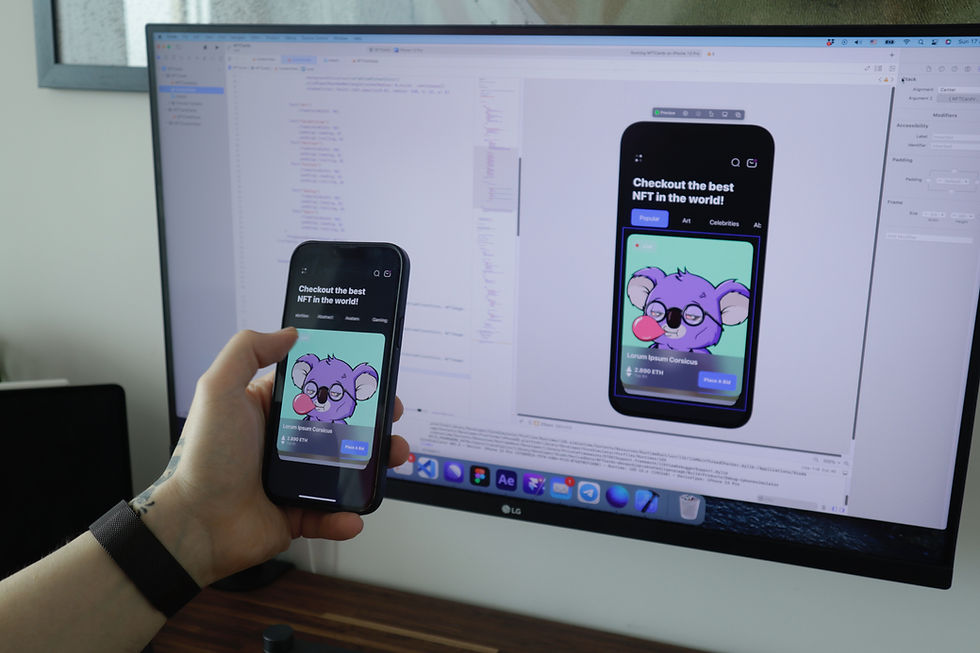Guide to Implement Continuous Integration (CI) and Continuous Delivery (CD) for Flutter Apps
- May 27, 2023
- 5 min read

In today's fast-paced software development landscape, it is crucial to adopt practices that enable rapid and efficient delivery of high-quality mobile applications. Continuous Integration (CI) and Continuous Delivery (CD) are two essential methodologies that help streamline the development, testing, and deployment processes.
In this blog, we will explore how to implement CI/CD for Flutter apps, leveraging popular tools like Jenkins and Fastlane.
What is Continuous Integration (CI)?
Continuous Integration is a software development practice that involves regularly merging code changes from multiple developers into a shared repository. The primary goal of CI is to detect and address integration issues early in the development cycle. With CI, developers continuously integrate their changes into the main branch, triggering an automated build and testing process to ensure that the application remains functional.
What is Continuous Delivery (CD)?
Continuous Delivery extends CI by automating the entire release process. It focuses on delivering software that is always in a releasable state, making it ready for deployment to any environment at any time. CD includes activities like automated testing, packaging, and deployment, ensuring that the application can be easily released to production or other target environments.
Setting Up CI/CD for Flutter Apps
Step 1: Setting up Jenkins
Install Jenkins: Install Jenkins on a server or use a hosted Jenkins service, following the installation instructions provided by the Jenkins documentation.
Install Required Plugins: Set up Jenkins with necessary plugins such as Git, Flutter, and Fastlane. Navigate to the Jenkins dashboard, go to "Manage Jenkins" -> "Manage Plugins," and search for the required plugins. Install and restart Jenkins after plugin installation.
Configure Flutter SDK Path: Configure the Flutter SDK path in the Jenkins global configuration. Navigate to "Manage Jenkins" -> "Global Tool Configuration" and locate the Flutter section. Provide the path to the Flutter SDK installation directory.
Step 2: Creating a Jenkins Pipeline
Create a New Pipeline Project: On the Jenkins dashboard, click on "New Item" and select "Pipeline" to create a new pipeline project.
Define Pipeline Script: In the pipeline configuration, define the pipeline script, which includes stages for building, testing, and deploying the Flutter app. Use the Flutter CLI commands within the pipeline script to run tests, build APKs or iOS artifacts, and generate necessary files.
Step 3: Integrating Fastlane
Install Fastlane: Install Fastlane using RubyGems by running the command gem install fastlane in your command-line interface.
Configure Fastlane: Configure Fastlane to handle the automation of code signing, distribution, and other CD tasks for Flutter apps. Navigate to your Flutter project directory and run fastlane init to set up Fastlane in your project.
Define Fastlane Lanes: Define Fastlane lanes for different stages of the CD process, such as beta testing, app store deployment, etc. Modify the generated Fastfile to include the necessary lanes and their respective actions.
Step 4: Configuring Version Control and Hooks
Connect to Version Control System: Connect your Flutter project to a version control system like Git. Initialize a Git repository in your project directory, commit the initial codebase, and set up the remote repository.
Set Up Git Hooks: Set up Git hooks to trigger the Jenkins pipeline on code commits or merges. Create a post-commit or post-merge hook in your local Git repository's .git/hooks directory, invoking a command that triggers the Jenkins pipeline when changes are pushed to the repository.
Configure Webhook Notifications: Configure webhook notifications in your version control system to receive build status updates. Set up the webhook URL in your Git repository's settings to notify Jenkins of new code changes.
Step 5: Testing and Building the Flutter App
Add Tests to Your Flutter Project: Add unit tests and integration tests to your Flutter project using Flutter's built-in testing framework or any preferred testing library.
Configure Jenkins Pipeline for Testing: Modify the Jenkins pipeline script to execute the tests during the CI process. Use Flutter CLI commands like flutter test to run the tests and generate test reports.
Track Test Coverage: Utilize code coverage tools like lcov to measure test coverage in your Flutter project. Generate coverage reports and integrate them into your CI/CD pipeline for tracking the test coverage over time.
Step 6: Deployment and Distribution
Configure Fastlane Lanes for Deployment Targets: Configure Fastlane lanes for different deployment targets, such as Google Play Store or Apple App Store. Modify the Fastfile to include actions for building and distributing the Flutter app to the desired platforms.
Define Deployment Configurations: Define deployment-related configurations such as code signing identities, release notes, and versioning in the Fastfile.
Deploying the Flutter App: Execute the Fastlane lanes to build and distribute the Flutter app to the target environments. Use the appropriate Fastlane commands like fastlane deploy to trigger the deployment process.
Sample files
Jenkins Pipeline Script (Jenkinsfile):
pipeline {
agent any
stages {
stage('Checkout') {
steps {
// Checkout source code from Git repository
git 'https://github.com/your-repo/flutter-app.git'
}
}
stage('Build') {
steps {
// Install Flutter dependencies
sh 'flutter pub get'
// Build the Flutter app for Android
sh 'flutter build apk --release'
// Build the Flutter app for iOS
sh 'flutter build ios --release --no-codesign'
}
}
stage('Test') {
steps {
// Run unit tests
sh 'flutter test'
}
}
stage('Deploy') {
steps {
// Install Fastlane
sh 'gem install fastlane'
// Run Fastlane lane for deployment
sh 'fastlane deploy'
}
}
}
}
Fastfile:
default_platform(:ios)
platform :ios do
lane :deploy do
# Match code signing
match(
type: "appstore",
readonly: true,
keychain_name: "fastlane_tmp_keychain",
keychain_password: "your-password"
)
# Build and distribute the iOS app
gym(
scheme: "YourAppScheme",
export_method: "app-store"
)
end
end
platform :android do
lane :deploy do
# Build and distribute the Android app
gradle(
task: "assembleRelease"
)
# Upload the APK to Google Play Store
playstore_upload(
track: "internal",
apk: "app/build/outputs/apk/release/app-release.apk",
skip_upload_metadata: true,
skip_upload_images: true
)
end
endNote: Remember to update the Jenkins pipeline script and Fastfile according to your specific project configurations, such as repository URLs, app names, code signing identities, and deployment targets.
Ensure that you have the necessary dependencies and configurations in place, such as Flutter SDK, Fastlane, and code signing certificates, before executing the pipeline.
This sample provides a basic structure for CI/CD with Jenkins and Fastlane for Flutter apps. You can further customize and enhance these scripts to meet your project's requirements.
Conclusion
Implementing Continuous Integration and Continuous Delivery for Flutter apps brings significant benefits to the development and deployment processes. By automating the build, testing, and deployment stages, developers can save time, reduce errors, and ensure the consistent delivery of high-quality applications. Jenkins and Fastlane provide powerful tools for achieving CI/CD in Flutter projects, allowing developers to focus on building exceptional mobile experiences.
By adopting CI/CD practices, Flutter developers can accelerate their development cycles, improve collaboration, and deliver reliable apps to end-users more efficiently.
Remember, CI/CD is an iterative process, and it's crucial to continuously improve and adapt your workflows to meet your project's evolving needs.
Happy coding and deploying your Flutter apps with CI/CD!



Comments